 Kia Sorento: Curtain air bag
Kia Sorento: Curtain air bag
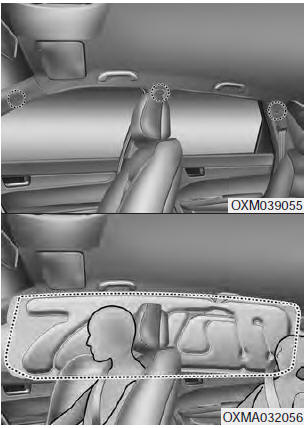
Curtain air bags are located along both sides of the roof rails above the front and rear doors.
They are designed to help protect occupants in certain side impacts and to help prevent them from ejecting out of the vehicle as a result of a rollover, especially when the seatbelts are also in use.
- The curtain air bags are designed to deploy during certain side impact collisions, depending on the crash severity, angle, speed and point of impact.
- The curtain air bags do not only deploy on the side of the impact but also on the opposite side.
- Also, the curtain air bags on both sides of the vehicle will deploy in certain rollover situations.
- The curtain air bags are not designed to deploy in all side impact or rollover situations.
WARNING
- In order for side and curtain air bags to provide the best protection, front seat occupants and outboard rear occupants should sit in an upright position with the seat belts properly fastened. Importantly, children should sit in a proper child restraint system in the rear seat.
- When children are seated in the rear outboard seats, they must be seated in the proper child restraint system. Make sure to position the child restraint system as far away from the door side as possible, and secure the child restraint system in a locked position.
- Do not allow the passengers to lean their heads or bodies against the doors, put their arms on the doors, stretch their arms out of the window or place objects between the doors and passengers when they are seated on seats equipped with side impact and/or curtain air bags.
- Never try to open or repair any components of the side and curtain air bag system. This should only be done by an authorized Kia dealer. Failure to follow the above mentioned instructions can result in injury or death to the vehicle occupants in an accident.
Why didnŌĆÖt my air bag go off in a collision? (Inflation and non-inflation conditions of the air bag) There are many types of accidents in which the air bag would not be expected to provide additional protection.
These include rear impacts, second or third collisions in multiple impact accidents, as well as low speed impacts.
Air bag collision sensors
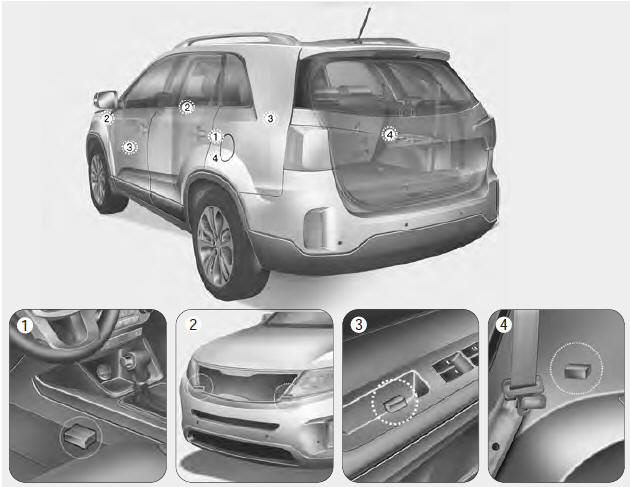
(1) SRS control module/ Rollover sensor
(2) Front impact sensor
(3) Side impact sensor
(4) Side impact sensor
WARNING
- Do not hit or allow any objects to impact the locations where air bags or sensors are installed. This may cause unexpected air bag deployment, which could result in serious personal injury or death.
- If the installation location or angle of the sensors is altered in any way, the air bags may deploy when they should not or they may not deploy when they should, causing severe injury or death. Therefore, do not try to perform maintenance on or around the air bag sensors. Have the vehicle checked and repaired by an authorized Kia dealer.
- Problems may arise if the sensor installation angles are changed due to the deformation of the front bumper, front end module, body or front doors and/or C pillar where side collision sensors are installed. Have the vehicle checked and repaired by an authorized Kia dealer.
- Installing bumper guards (or side step or running board) or replacing a bumper (or front door module) with non-genuine parts may adversely affect your vehicleŌĆÖs collision and air bag deployment performance.
Air bag inflation conditions
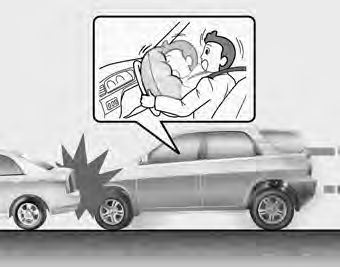
Front air bags
Front air bags are designed to inflate in a frontal collision depending on the intensity, speed or angles of impact of the front collision.
Side and/or curtain air bags
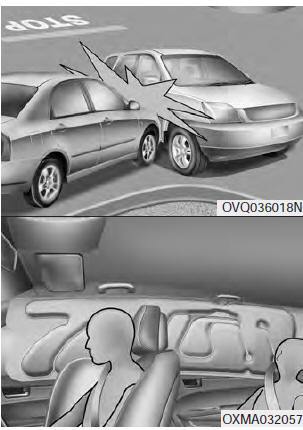
Side and/or curtain air bags are designed to inflate when an impact is detected by side collision sensors depending on the strength, speed or angles of impact resulting from a side impact collision.
Also, the side and curtain air bags are designed to inflate when a rollover is detected by a rollover sensor.
Although the front air bags (driverŌĆÖs and front passengerŌĆÖs air bags) are designed to inflate in frontal collisions, they also may inflate in other types of collisions if the front impact sensors detect a sufficient frontal force in another type of impact. side and curtain air bags are designed to inflate in certain side impact collisions.
They may inflate in other type of collisions where a side force is detected by the sensors. Side air bag and/or curtain air bags may also inflate where rollover sensors indicate the possibility of a rollover occurring (even if none actually occurs) or in other situations, incluiding when the vehicle is tilted while being towed. Even where side and/or curtain air bags would not provide impact protection in a rollover, however, they will deploy to prevent ejection of occupants, especially those who are restrained with seat belts.
If the vehicle chassis is impacted by bumps or objects on unimproved roads, the air bags may deploy. Drive carefully on unimproved roads or on surfaces not designed for vehicle traffic to prevent unintended air bag deployment.
Air bag non-inflation conditions
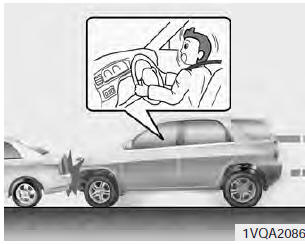
In certain low-speed collisions the air bags may not deploy. The air bags are designed not to deploy in such cases because they may not provide benefits beyond the protection of the seat belts in such collisions.
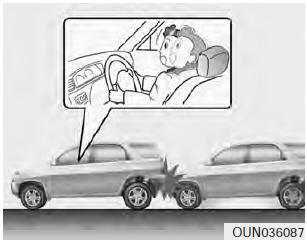
Air bags are not designed to inflate in rear collisions, because occupants are moved backward by the force of the impact. In this case, inflated air bags would not be able to provide any additional benefit.
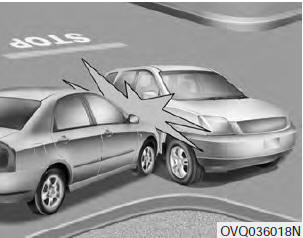
Front air bags may not inflate in side impact collisions, because occupants move to the direction of the collision, and thus in side impacts, frontal air bag deployment would not provide additional occupant protection.
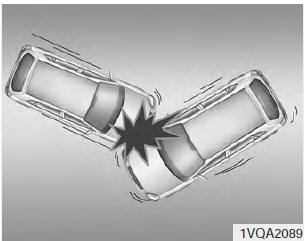
In an angled collision, the force of impact may direct the occupants in a direction where the air bags would not be able to provide any additional benefit, and thus the sensors may not deploy any air bags.
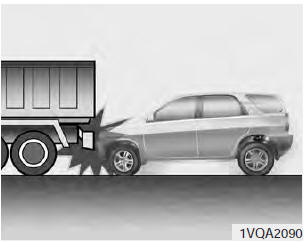
Just before impact, drivers often brake heavily. Such heavy braking lowers the front portion of the vehicle causing it to ŌĆ£rideŌĆØ under a vehicle with a higher ground clearance.
Air bags may not inflate in this "under-ride" situation because deceleration forces that are detected by sensors may be significantly reduced by such ŌĆ£under-rideŌĆØ collisions.

Front air bags may not inflate in all rollover accidents where the SRSCM indicates that the front air bag deployment would not provide additional occupant protection.
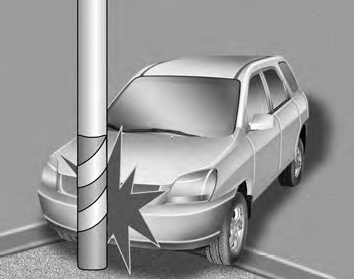
Air bags may not inflate if the vehicle collides with objects such as utility poles or trees, where the point of impact is concentrated to one area and the full force of the impact is not delivered to the sensors.
 Side air bag
Side air bag
Your vehicle is equipped with a side air bag in each front seat. The purpose
of the air bag is to provide the vehicle's driver and/or the front passenger with
additional protection than that o ...
 SRS Care
SRS Care
The SRS is virtually maintenancefree and so there are no parts you can safely
service by yourself. If the SRS air bag warning light does not illuminate, or continuously
remains on, have your vehicle ...
See also:
Operation
Evaporative System Monitoring
Evaporative And ORVR Emission Control System
This system consists of below items;
-
Fill vent valve
-
F ...
Front Bumper Replacement
ŌĆó
Pry the trim off using a plastic trim tool and apply protective
tape around the rela ...
Rear Door Components
1. Door inside handle cap
2. Door trim
3. Door belt inner weatherstrip
4. Door module
5. Door panel
6. Door belt weatherstrip
7. Door body side weatherstrip
8. Door ...
